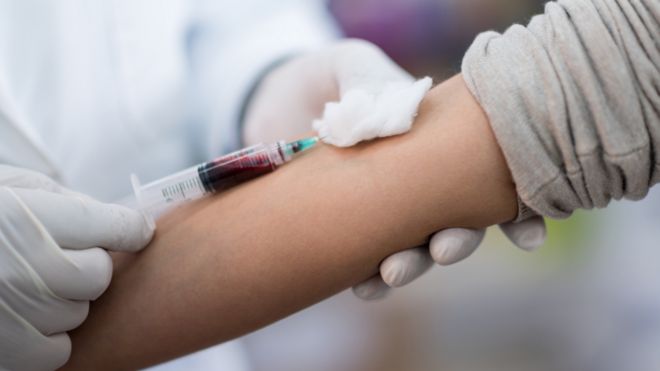Japanese encephalitis(JE) ?
SYMPTOMS, DIAGNOSIS,
Prevention and control measures
Q. What is Japanese encephalitis(JE) ?
 Japanese encephalitis(JE) is a viral disease that infects animals and
humans. It is transmitted by mosquitoes in humans causing inflammation of the
membranes around the brain. Japanese encephalitis is a leading cause
of viral encephalitis in Asia generally spread from western pacific region in
east to Pakistan in west and from Korea in north to Papua New Guinea in
south.
Japanese encephalitis(JE) is a viral disease that infects animals and
humans. It is transmitted by mosquitoes in humans causing inflammation of the
membranes around the brain. Japanese encephalitis is a leading cause
of viral encephalitis in Asia generally spread from western pacific region in
east to Pakistan in west and from Korea in north to Papua New Guinea in
south.
Japanese encephalitis is a disease caused by a flavi virus that affects
the membranes around the brain. Generally infections caused by Japanese
encephalitis virus are mild (fever and headache) or without apparent
symptoms, but sometimes 1 in 200 infections can result in severe disease
characterized by rapid onset of high grade fever, headache, neck stiffness,
disorientation, coma, seizures, spastic paralysis and death.
SYMPTOMS :
Japanese encephalitis has an incubation period of 5 to 15 days and the
majority of infections are asymptomatic i.e. only 1 in 250 infections develop
into encephalitis.
Intial symptoms include:
✓A high temperature (fever) of 38C (100.4F) or above
✓Headache
✓Feeling sick
✓Diarrhoea
✓Muscle pain
✓In rare cases, these initial symptoms last for
a few days and then develop into serious symptoms:
Seizures (fits)
✓Changes in mental state, which can range from
mild confusion to being very agitated or falling into a coma
✓Uncontrollable shaking of body parts (tremor)
✓ Losing the ability to speak
✓Muscle weakness
✓ Abnormally tense muscles (hypertonia)
✓ Movement problems, such as shaking,
stiffness, slowness of movement or paralysis
✓ Difficulties in controlling the movements of
the eyes
✓Difficulties in controlling the muscles of
the face
DIAGNOSIS
✓Blood tests: To know the antibodies present in the blood.
✓Lumbar puncture: It is also done to check for antibodies in CSF
and spinal fluid.
✓Scans: In case of brain encephalitis:
✓A computerized tomography (CT) scan, which
takes a series of X-rays of body at slightly different angles to produce a
clear image of the inside of body
✓A magnetic resonance imaging (MRI) scan,
which uses a strong magnetic field and radio waves to produce detailed images
of the inside of body
✓NHP provides indicative information for better
understanding of health. For any diagnosis and treatment purpose you should
consult your physician.
Prevention and
control measures for Japanese Encephalitis (JE):
A. At Individual Level
✓ Adopt measures to reduce vector density.
✓ Take personal protection measures against mosquito bites.
✓ Wear proper clothing to reduce mosquito bites specially during peak
biting hours.
✓ Use of mosquito repellent creams, liquids, coils, mats etc.
✓ Use insecticide treated mosquito bed nets.
✓ Sleeping in rooms with close-fitting windows and doors.
✓ Spraying the room with insecticide specially in the early evening.
✓ Screening of the houses with wire mesh.
✓ DEET (diethyltoluamide) is most effective repellents and it is available
in sprays, roll-ons, sticks and creams.
✓Japanese encephalitis (JE) vaccination is an important tool for
prevention. Three doses are given to an individual & vaccine can prevent
Japanese encephalitis (JE) for a number of years.
B. In the Community
✓ Malathion fogging during outbreaks.
✓ Sensitizing and involving the community for detection of vector.
✓ Adopt Eco-management system to reduce mosquito breeding.
✓ From human dwellings piggeries should be kept away,at least 4-5 kms.
✓ The place around the Hand Pump
should be properly cemented and along with drainage system.
C. Prevention During Travel
✓ If travelling, try to find out the Japanese encephalitis (JE) risk in
that particular area and take the advice from doctor before visiting that area.
D. Prevention of Japanese Encephalitis (JE) during Pregnancy
✓ Use of treated nets/LLINs(Long Lasting Insecticidal Nets).
✓ All the personal preventions as mentioned above.
Some Do's and Don't
✓ Don't spray/cream insect repellent directly onto your face, spray it
onto your hands and then apply it to your face.
✓ Do not use it on cuts and wounds.
✓ Avoid area around eyes, lips, mouth and ears canal.
✓ Help children and youngsters to apply repellent. Don't allow young
children to apply it themselves.
✓ Apply insect repellent after applying sunscreen.
✓ Wash your hands thoroughly after use.
✓ Wash the repellent off your skin with soap.
✓ Always follow the instructions written on the repellent.
Spreading awareness by : National Health Portal India










